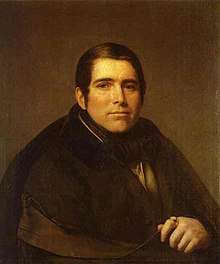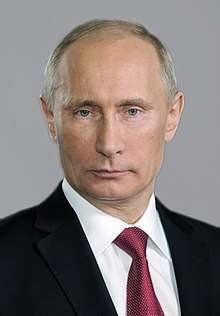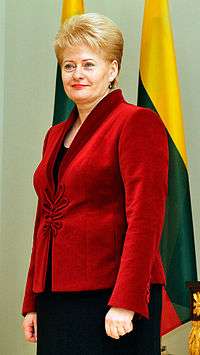Saint Petersburg State University
Saint Petersburg State University (SPbU, Russian: Санкт-Петербургский государственный университет, СПбГУ) is a Russian federal state-owned higher education institution based in Saint Petersburg. It is the oldest and one of the largest universities in Russia.
Санкт-Петербургский государственный университет | |
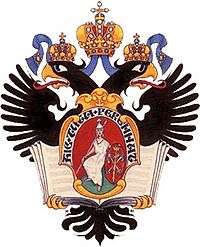 | |
| Latin: Universitas Petropolitana | |
Former name | Petersburg Pedagogical Institute (1804–14) Main Pedagogical Institute (1814–19) Saint Petersburg University (1819–21) Saint Petersburg Imperial University (1821–1914) Petrograd Imperial University (1914–18) Petrograd State University (1918–24) Leningrad State University (1924–91) |
|---|---|
| Motto | Hic tuta perennat (Here all in safety lasts) |
| Type | Public |
| Established | 1724 1804 as Petersburg Pedagogical Institute |
| Rector | Nikolai M. Kropachev |
Administrative staff | 13,000 |
| Students | 32,400 |
| Undergraduates | 26,872 |
| Postgraduates | 5,566 |
| Address | 7/9 Universitetskaya Emb., 199034 , , Russia |
| Campus | Both urban and suburban |
| Colours | Terracotta and gray[1]
Building details |
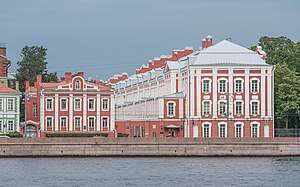 The Twelve Collegia building on Vasilievsky Island in Saint Petersburg is the university's main building and the seat of the rector and administration (the building was constructed on the orders of Peter the Great for the 12 collegia) | |
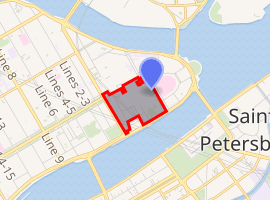
| |
| Affiliations | BRICS Universities League, Campus Europae, Association of Professional Schools of International Affairs |
| Website | english.spbu.ru |
Founded in 1724 by a decree of Peter the Great, the University from the very beginning has had a strong focus on fundamental research in science, engineering and humanities.
It is made up of 24 specialized faculties and institutes, the Academic Gymnasium, the Medical College, the College of Physical culture and Sports, Economics and Technology. The university has two primary campuses: one on Vasilievsky Island and the other in Peterhof.
During the Soviet period, it was known as Leningrad State University (Russian: Ленинградский государственный университет). It was named after Andrei Zhdanov in 1948.
Reputation and international rankings
| University rankings | |
|---|---|
| Global – Overall | |
| ARWU World[2] | 301-400 |
| QS World[3] | 235 |
Saint Petersburg State University is the second best multi-faculty university in Russia after Moscow State University. In international rankings, the university was ranked 240th[4] in 2013/2014, by the QS World University Rankings, it was placed 351–400th[5] by the Times Higher Education World University Rankings and 301–400th[6] by the Academic Ranking of World Universities outperforming the rest of universities in Russia excluding Moscow State University.
The university has a reputation for having educated the majority of Russia's political elite, including presidents Vladimir Putin and Dimitry Medvedev, both of whom studied Law at the university.
The university is Russia's oldest university, founded in 1724 by Peter the Great, which predates the foundation of Moscow State University in 1755.[7][8]
Saint Petersburg state university is included in all ratings and lists of the best universities in the world and is one of the leaders in all indicators in Russia.
The university was the first from Russian universities to join The Coimbra Group (CG), and it now represents Russia.
History
1724–1821
| Timeline |
|---|
|
It is disputed by the university administration whether Saint Petersburg State University or Moscow State University is the oldest higher education institution in Russia. While the latter was established in 1755, the former, which has been in continuous operation since 1819, claims to be the successor of the university established along with the Academic Gymnasium and the Saint Petersburg Academy of Sciences on January 24, 1724, by a decree of Peter the Great.
Between 1804 and 1819, Saint Petersburg University officially did not exist; the institution founded by Peter the Great, the Saint Petersburg Academy, had been disbanded, because the new 1803 charter of the Academy of Sciences stipulated that there should be no educational institutions affiliated with it.
The Petersburg Pedagogical Institute, renamed the Main Pedagogical Institute in 1814, was established in 1804 and occupied a part of the Twelve Collegia building.[9] On February 8, 1819 (O.S.), Alexander I of Russia reorganized the Main Pedagogical Institute into Saint Petersburg University, which at that time consisted of three faculties: Faculty of Philosophy and Law, Faculty of History and Philology and Faculty of Physics and Mathematics.[9] The Main Pedagogical Institute (where Dmitri Mendeleev studied) was restored in 1828 as an educational institution independent of Saint Petersburg University, and trained teachers until it was finally closed in 1859.[10]
1821–1917
In 1821, the university was renamed Saint Petersburg Imperial University.[9] In 1823, most of the university moved from the Twelve Collegia to the southern part of the city beyond the Fontanka. In 1824, a modified version of the charter of Moscow University was adopted as the first charter of the Saint Petersburg Imperial University. In 1829, there were 19 full professors and 169 full-time and part-time students at the university. In 1830, Tsar Nicholas returned the entire building of the Twelve Collegia to the university, and courses resumed there.
In 1835, a new Charter of the Imperial Universities of Russia was approved. It provided for the establishment of the Faculty of Law, the Faculty of History and Philology, and the Faculties of Physics and Mathematics, which were merged into the Faculty of Philosophy as the 1st and 2nd Departments, respectively.
In 1849, after the Spring of Nations, the Senate of the Russian Empire decreed the Rector should be appointed by the Minister of National Enlightenment rather than elected by the Assembly of the university. However, Pyotr Pletnyov was reappointed Rector and ultimately became the longest-serving rector of Saint Petersburg University (1840–1861).
%2C_Botanical_Gardens%2C_Saint_Petersburg_State_University%2C_Russia_(10_April_2008).jpg)
In 1855, Oriental studies were separated from the Faculty of History and Philology, and the fourth faculty, Faculty of Oriental Languages, was formally inaugurated on August 27, 1855.[11]
In 1859–1861, female part-time students could attend lectures in the university. In 1861, there were 1,270 full-time and 167 part-time students in the university, of them 498 were in the Faculty of Law, the largest subdivision. But this subdivision had the cameral studies department, where students learnt safety, occupational health and environmental engineering management and science, including chemistry, biology, agronomy along with law and philosophy. Many Russian, Georgian etc. managers, engineers and scientists studied at the Faculty of law therefore. During 1861–1862, there was student unrest in the university, and it was temporarily closed twice during the year. The students were denied freedom of assembly and placed under police surveillance, and public lectures were forbidden. Many students were expelled. After the unrest, in 1865, only 524 students remained.
A decree of the Emperor Alexander II of Russia adopted on February 18, 1863, restored the right of the university assembly to elect the rector. It also formed the new faculty of the theory and history of art as part of the faculty of history and philology.[12]
In March 1869, student unrest shook the university again but on a smaller scale. By 1869, 2,588 students had graduated from the university.
In 1880, the Ministry of National Enlightenment forbade students to marry and married persons could not be admitted. In 1882, another student unrest took place in the university. In 1884, a new Charter of the Imperial Russian Universities was adopted, which granted the right to appoint the rector to the Minister of National Enlightenment again. On March 1, 1887 (O.S.), a group of the university students was arrested while planning an attempt on the life of Alexander III of Russia. As a result, new admission rules to gymnasiums and universities were approved by the Minister of National Enlightenment Ivan Delyanov in 1887, which barred persons of non-noble origin from admission to the university, unless they were extraordinarily talented.
By 1894, 9,212 students had graduated from the university. Among the renowned scholars of the second half of the 19th century, affiliated with the university were mathematician Pafnuty Chebyshev, physicist Heinrich Lenz, chemists Dmitri Mendeleev and Aleksandr Butlerov, embryologist Alexander Kovalevsky, physiologist Ivan Sechenov and pedologist Vasily Dokuchaev. On March 24, 1896 (O.S.), on the campus of the university, Alexander Popov publicly demonstrated transmission of radio waves for the first time in history.
As of January 1, 1900 (O.S.), there were 2,099 students enrolled in the Faculty of Law, 1,149 students in the Faculty of Physics and Mathematics, 212 students in the Faculty of Oriental Languages and 171 students in the Faculty of History and Philology. In 1902, the first student dining hall in Russia was opened in the university.
Since about 1897, regular strikes and student unrest shook the university and spread to other institutions of higher education across Russia. During the Revolution of 1905, the charter of the Russian universities was amended once more; the autonomy of the universities was partially restored and the right to elect the rector was returned to the academic board for the first time since 1884. In 1905–1906, the university was temporarily closed due to student unrest. Its autonomy was revoked again in 1911. In the same year, the university was once again temporarily closed.
In 1914, with the start of the First World War, the university was renamed Petrograd Imperial University after its namesake city. During the War, the university was the important center of mobilization of Russian intellectual resources and scholarship for the victory.[13] In 1915, a branch of the university was opened in Perm, which later became Perm State University.
1918–present
The Assembly of Petrograd Imperial University openly welcomed the February Revolution of 1917, which put an end to the Russian monarchy, and the university came to be known as Petrograd University. However, after the October Revolution of 1917, the university's staff and administration were initially vocally opposed to the Bolshevik takeover of power and reluctant to cooperate with the Narkompros. Later in 1917–1922, during the Russian Civil War, some of the staff suspected of counter-revolutionary sympathies suffered imprisonment (e.g., Lev Shcherba in 1919), execution, or exile abroad on the so-called Philosophers' ships in 1922 (e.g., Nikolai Lossky). Furthermore, the entire staff suffered from hunger and extreme poverty during those years.
In 1918, the university was renamed 1st Petrograd State University, and in 1919, the Narkompros merged it with the 2nd PSU (former Psychoneurological Institute) and 3rd PSU (former Bestuzhev Higher Courses for Women) into Petrograd State University. In 1919, the Faculty of Social Science was established by the Narkompros instead of the Faculty of History and Philology, Faculty of Oriental Languages and Faculty of Law. Nicholas Marr became the first Dean of the new faculty. Chemist Alexey Favorsky became the Dean of the Faculty of Physics and Mathematics. Rabfaks and free university courses were opened on the basis of the university to provide mass education.
In the fall of 1920, as observed by freshman student Alice Rosenbaum, enrollment was open and the majority of the students were anti-communist including, until removed, a few vocal opponents of the regime. Seeing they were educating "class enemies", a purge was conducted in 1922 based on the class background of the students, and all students, other than seniors, with a bourgeois background were expelled.[14]
In 1924, the university was renamed Leningrad State University after its namesake city. In order to suppress intellectual opposition to Soviet power, a number of historians working in the university, including Sergey Platonov, Yevgeny Tarle and Boris Grekov, were imprisoned in the so-called Academic Affair of 1929–1930 on fabricated charges of participating in a counter-revolutionary conspiracy aimed at overthrowing the government. Some other members of the staff were repressed in 1937–1938 during the Great Purge.
During the 1941–1944 Siege of Leningrad in World War II, many of the students and staff died from starvation, in battles or from repressions. However, the university operated continuously, and evacuated to Saratov in 1942–1944. A branch of the university was hosted in Yelabuga during the war. In 1944, the Presidium of the Supreme Council of the Soviet Union awarded the university with the Order of Lenin on the occasion of its 125th anniversary and for its contribution to science and culture.
In 1948, the Council of Ministers named the university after Andrei Zhdanov, a recently deceased prominent communist official. This decision was revoked in 1989 during Perestroika.
In 1949–1950, several professors died in prison during the investigation of the Leningrad Affair fabricated by the central Soviet leadership, and the Minister of Education of the RSFSR, former rector Alexander Voznesensky, was executed.
In 1966, the Council of Ministers decided to build a new suburban campus in Petrodvorets for most of the mathematics and natural science faculties. The relocation of the faculties had been completed by the 1990s.
In 1969, the Presidium of the Supreme Council of the Soviet Union awarded the university with the Order of the Red Banner of Labour.
In 1991, the university was renamed back to Saint Petersburg State University after its namesake city.
Growth of the University
| Timeline |
|---|
|
The growth was supervised by rectors.
List of rectors
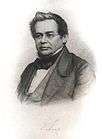
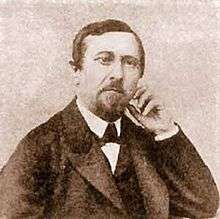
- 1819–1821 Mikhail Balugyansky
- 1821–1825 Yevdokim Zyablovskiy
- 1825–1836 Antoine Jeudy Dugour
- 1836–1840 Ivan Shulgin
- 1840–1861 Pyotr Pletnyov
- 1861–1863 Alexander Voskresensky
- 1863–1865 Heinrich Lenz
- 1865–1867 Alexander Voskresensky
- 1867–1873 Karl Fedorovich Kessler
- 1873–1876 Pyotr Redkin
- 1876–1883 Andrei Beketov
- 1883 (1884)–1887 Ivan Andreevsky
- 1887–1890 Mikhail Vladislavlev
- 1890–1897 Pyotr Nikitin
- 1897–1899 V. Sergeevich
- 1899–1903 Adolf Holmsten
- 1903–1905 A. Zhdanov
- 1905–1910 Ivan Borgman
- 1910–1911 David Grimm
- 1911–1918 Erwin Grimm
- 1918–1919 Alexander Ivanov
- 1919 Sergei Zhebelev
- 1919–1922 Vladimir Shimkevich
- 1922–1926 Nikolay Derzhavin
- 1926–1927 V. Tomashevsky
- 1927–1930 Mikhail Serebryakov
- 1930–1932 Yury Nikich (director)
- 1932–1933 V. Seryozhnikov (director)
- 1933–1938 Mikhail Lazurkin (director)
- 1938–1939 Konstantin Lukashev (director)
- 1939 A. Marchenko (director)
- 1939–1941 P. Zolotukhin (director)
- 1941–1948 Alexander Voznesensky
- 1948–1950 Nikita Domnin
- 1950–1952 Alexey Ilyushin
- 1952–1964 Aleksandr Aleksandrov
- 1964–1970 Kirill Y. Kondratyev
- 1970–1975 Gleb Makarov
- 1975–1986 Valentin Aleskovski
- 1986–1993 Stanislav Merkuriev
- 1993(1994)–2008 Lyudmila Verbitskaya
- since 2008 Nikolai Kropachev
Organization
Governance
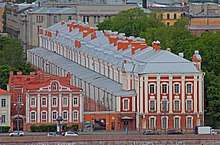
The university is a federal state institution of higher education managed by the government of the Russian Federation. It has 24 faculties and institutes which are further subdivided into departments, and other main structural subdivisions, including the Sports Department, Rectorate, Gorky Scientific Library, Academic Gymnasium, publishing house, and clinic.
The superior body of self-government of the university is its Assembly, which elects the Rector and the Academic Board of the University for a five-year term. The Assembly of the University consists of the members of the Academic Board of the University and the staff delegated by the general assemblies of the main structural subdivisions according to quotas set by the Academic Board of the University. The general administration of the university is vested in the Academic Board, which consists of the Rector, who presides over it, as well as the President of the University, vice rectors and representatives of the main structural subdivisions.
Likewise, the general administration of a faculty is vested in its respective academic board elected by the faculty assembly for five years. The procedure of election and department quotas are decided by the faculty-level academic board itself. The dean, who leads the faculty and presides over its academic board, is elected for five years by the faculty academic board.
Academic year
The academic year in St. Petersburg State University according to the Routine Regulations normally starts on September 1. One lesson normally lasts an hour and a half (two academic hours). As in other higher education institutions in Russia, the academic year is divided into two semesters. The first semester (term) ends by late December, the second starts in mid-February and lasts until late May. Each term is followed by a series of preliminary tests (in the last week of December/May) and exams (in January/June).
Campuses

The university has two main campuses: on Vasilievsky Island in the historic city center and in Peterhof (formerly Petrodvorets), a southwestern suburb, which can be reached by railway from the city's Baltiysky Rail Terminal. The main building of the university, Twelve Collegia, is on Vasilievsky Island and includes the Library, the Faculty of Biology and the Institute of Earth Sciences. The Faculty of Philology and the Faculty of Oriental Studies share the nearby 18th-century Petrine Baroque building on Universitetskaya Embankment of the Bolshaya Neva, designed by Domenico Trezzini and originally built as the Palace of Peter II of Russia. The New Gostiny Dvor designed by Giacomo Quarenghi and built in the 19th century in that part of the island is occupied by the Institute of History, Institute of Philosophy. The Faculty of Psychology is in front of it on Admiral Makarov Embankment of the Malaya Neva. The Graduate School of Management, School of Journalism and Mass Communications, Faculty of Medicine, Faculty of Dentistry and Medical Technologies, Faculty of Law and Faculty of Military Studies are on Vasilievsky Island, but farther to the west. Four other social science faculties are east of the city center on the southern bank of the Neva: the Faculty of Economics is not far from the Chernyshevskaya metro station, while the Faculty of Sociology, Faculty of Political Science and the School of International Relations occupy historical buildings of Smolny Convent.
The new suburban campus consists of the Faculty of Applied Mathematics and Control Processes, Institute of Chemistry, Faculty of Mathematics and Mechanics, and Faculty of Physics, which are in modern buildings in Peterhof. Nearby the Peterhof campus there is a beautiful park area called Sergievka. In the Sergievka park there are buildings of the Faculty of Biology. One of the Sergievka's park sights is a carved from a boulder head of a hero.
Faculties and Institutes
SPbSU is made up of 24 specialized faculties, which are:
- Faculty of Applied Mathematics and Control Processes (*rus | *eng)
- Faculty of Biology (*rus)
- Institute of Chemistry
- Faculty of Dentistry and Medical Technology (*rus)
- Faculty of Economics (*rus)
- Institute of Earth Sciences (*rus)
- Institute of History (*rus)
- School of International Relations (*rus)
- Faculty of Law
- Faculty of Liberal Arts and Sciences (*rus | *eng)
- Faculty of Mathematics and Mechanics (*rus | *eng)
- Faculty of Medicine (*rus)
- Faculty of Oriental Studies (*rus | *eng)
- Faculty of Arts (*rus | *eng)
- Faculty of Philology (*rus | *eng)
- Institute of Philosophy (*rus | *eng)
- Faculty of Physics (*rus | *eng)
- Faculty of Political Science (*rus) (*rus | *eng)
- Faculty of Psychology (*rus | *eng)
- Faculty of Sociology (*rus)
- Graduate School of Management
- Military Faculty (*rus)
- School of Journalism and Mass Communications (*rus | *eng)
- Faculty of Applied Communications
- Faculty of Journalism
There is also a Department of Physical Culture and Sports. (*rus)
Notable alumni and faculty

Saint Petersburg State University has produced a number of Nobel Prize winners. The Russian revolutionary and the founder of the Soviet Union, Vladimir Lenin was an alumnus. Prime Ministers Pyotr Stolypin and Dimitry Medvedev of Russia, the President and former Prime Minister of Russia Vladimir Putin, and the President of Lithuania Dalia Grybauskaitė are alumni, as is the mathematician Mikhail Gromov.
Eight of the graduates of the university are Nobel Prize recipients: Ivan Pavlov (Physiology and Medicine, 1904), Ilya Mechnikov (Physiology and Medicine, 1908), Nikolay Semyonov (Chemistry, 1956), Lev Landau (Physics, 1962), Aleksandr Prokhorov (Physics, 1964), Wassily Leontief (Economics, 1973), Leonid Kantorovich (Economics, 1975) and Joseph Brodsky (Literature, 1987).
Grigori Perelman and Stanislav Smirnov are two graduates awarded by the Fields medal.
Among the renowned scholars affiliated with St-Petersburg State University have been Leonard Euler, Mikhail Lomonosov, chemist Dmitri Mendeleev, mathematicians Mikhail Ostrogradsky, Pafnuty Chebyshev, Vladimir Smirnov, Andrey Markov, Sergei Sobolev, Vladimir Steklov, Aleksandr Lyapunov, Solomon Mikhlin, Yuri Linnik and Aleksandr Aleksandrov, physicists Boris Rosing, Vladimir Fock, Elena Besley, astrophysicist Viktor Ambartsumian, botanists Vladimir Komarov and Vladimir Sukachev, physiologists Ivan Sechenov, Kliment Timiryazev, philosopher and sociologist Pitirim Sorokin, historians Mahapandit Rahul Sankrityayan, Yevgeny Tarle and Boris Grekov, philologists Ivan Turgenev, Ilia Chavchavadze, Alexander Blok, Lev Shcherba, Vladimir Propp, Viktor Zhirmunsky, orientalists Vasily Struve, Joseph Orbeli, Boris Piotrovsky, artist Nicholas Roerich, Zare Yusupova and others.
Composer Igor Stravinsky attended the university from 1901 to 1905.
The American novelist Ayn Rand attended the university from 1920 to 1924, graduating with honors in history.[15]
Ukrainian nationalist and publicist Dmytro Dontsov studied law at the university for some time after 1900.
Joseph Shor, a student of the School of Mathematics and Mechanics, is known as the main protege of Ostap Bender.[16] Igor Artimovich is known for creating Festi. Yakov Rekhter is known for creating BGP.
Pavel Durov graduated the department of philology while his brother Nikolai Durov received his PhD from the department of mathematics.
See also
- Education in Russia
- List of universities in Russia
- Open access in Russia
- Smolny College
- List of Russian scientists
- List of early modern universities in Europe
References
- "Фирменные цвета". spbu.ru. Retrieved 28 March 2017.
- "ARWU World University Rankings 2017 - Academic Ranking of World Universities 2017 - Top 500 universities - Shanghai Ranking - 2017". www.shanghairanking.com.
- "Saint Petersburg State University | Top Universities". https://www.topuniversities.com. 2015-07-16. External link in
|website=(help) - "Saint Petersburg State University Rankings".
- "Search".
- "Archived copy". Archived from the original on 2011-11-18. Retrieved 2011-10-09.CS1 maint: archived copy as title (link)
- "About - Saint Petersburg University". english.spbu.ru. Retrieved 2020-03-19.
- "Lomonosov Moscow State University". www.msu.ru. Retrieved 2020-03-19.
- Lewis, David E. (2012). Early Russian Organic Chemists and Their Legacy. Springer. p. 50. ISBN 978-3642282195.
- Rudakov, Vasiliy. Brockhaus and Efron Encyclopedic Dictionary. p. 787, Volume VIIIa.
- edited by Michael Kemper, Stephan Conermann (2011). The Heritage of Soviet Oriental Studies. Taylor & Francis. p. 36. ISBN 978-0203832752.CS1 maint: extra text: authors list (link)
- Murray, Natalia (2012). The Unsung Hero of the Russian Avant-Garde: The Life and Times of Nikolay Punin. BRILL. p. 25. ISBN 978-9004204751.
- Rostovcev E.A. The Capital University in a Time of War. Saint Petersburg/Petrograd 1914-1917 // Kollegen – Kommilitonen – Kämpfer. Europäische Universitäten im Ersten Weltkrieg / Hrsg. Von T. Maurer. Stuttgart: Franz Steiner Verlag, 2006. S. 177–188.
- Branden, Barbara (1986) The Passion of Ayn Rand. Garden City: Doubleday, hardcover, 442 pages, ISBN 0-385-19171-5; pp. 42–43; 50–51
- Branden, Barbara (1986); p. 54.
- "Реальная история великого комбинатора".
Bibliography
- The history of the university, with a particular focus on the Law Faculty, from the 19th century to the perestroika period, is documented in English in David Lempert, Daily Life in a Crumbling Empire: The Absorption of Russia into the World Economy, Book 2, Eastern European Monograph Series, Columbia University Press, 1996, ISBN 978-0-88033-341-2.
External links
| Wikimedia Commons has media related to Saint Petersburg State University. |
- Saint Petersburg State University homepage
- History of The St. Petersburg University in virtual space
